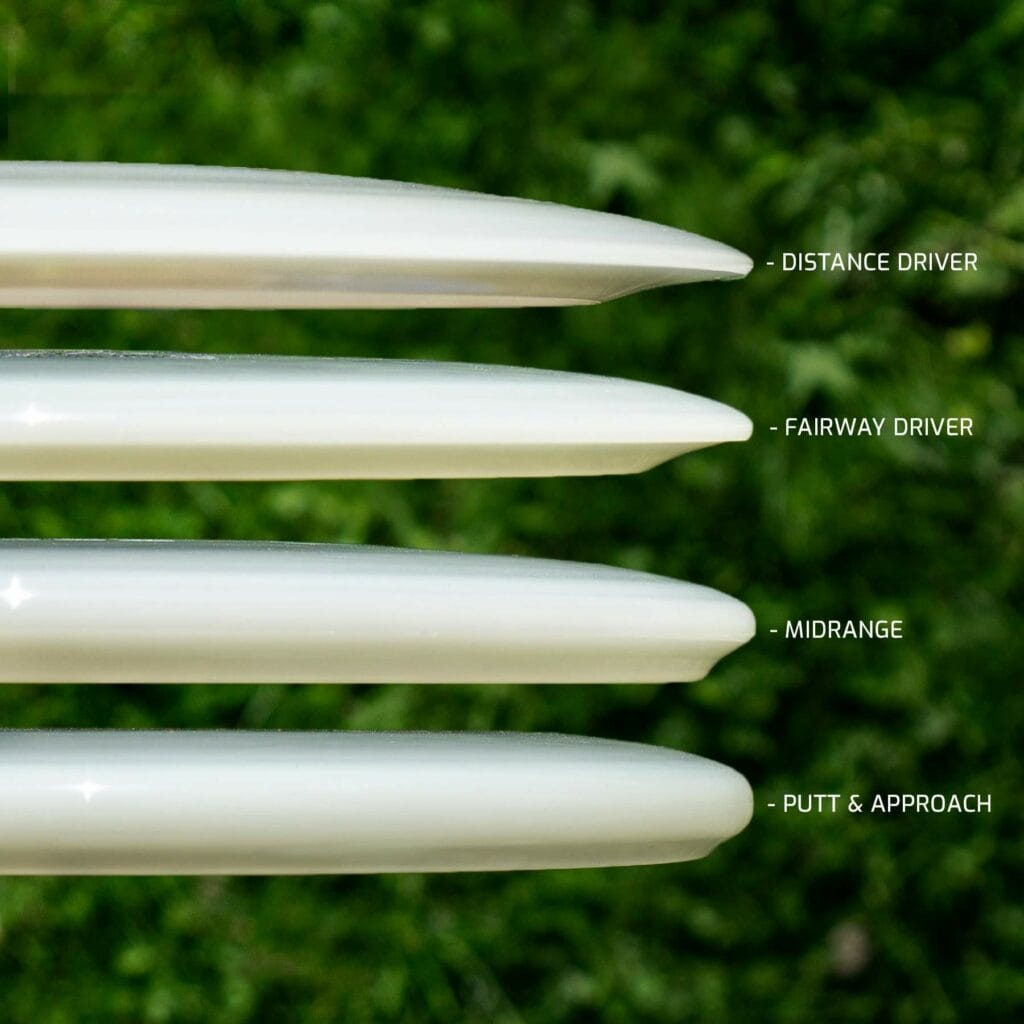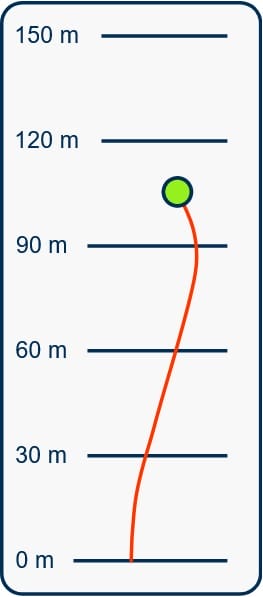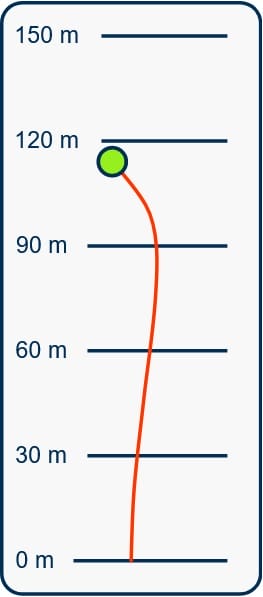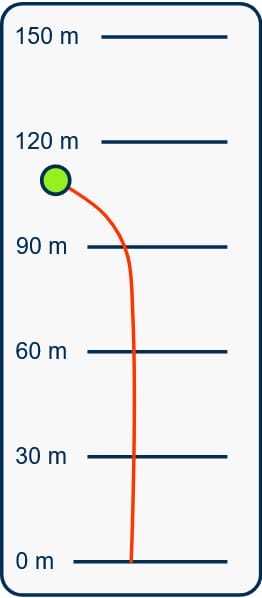There are many different discs for disc golf. This blog post “A little disc lore” should help you find the right choice in the “disc golf jungle”.
Discgolf basics disc types
Almost all manufacturers now try to describe the flight behavior of disc golf discs using 4 numbers. (Speed, Glide, Fade and Turn)
We differentiate between the basic types of discs according to flight speed or “speed” (1st value on your disc):
– Putter (1-3)
– Midrange (4-5)
– Fairway driver (6-8)
– Distance driver (9-15)
Putter
Putters are recognizable by their high design and rounded corners. They are used for controlled throws with straight trajectories.
Apart from approaches,putters are mainly used for the final throw, the putt.
There is no clear purchase recommendation for putters to begin with. The most important thing here is that the disc fits well in your hand and that you feel comfortable with it.
They are assigned a speed of 1 to 3.
Midrange
A mid-range disc is slightly slimmer. If you are a beginner and mainly throw backhands, a mid-range disc is the fastest disc we recommend. If you also throw forehand (sidearm) from time to time, a faster disc can help you to have more control over your throw.
Here we can particularly recommend the Prodigy M Model US, the MVP Reactor, the Latitude 64° Fuse and the Discmania Origin.
Midranges are assigned a speed of 4 to 5.
Fairway driver
Fairway drivers are the slower category of drivers. They are also called “control drivers”. These are often well suited for forehands.
Examples of discs in this category that we can recommend for new players include the Prodigy F7, the Latitude 64° Diamond and the Latitude 64° River.
The transition from fairway drivers to distance drivers is often chosen differently. We assign a speed of 6 to 8 to fairway drivers. However, this can vary depending on the manufacturer.

Distance driver
This is the fastest type of disc. With certain exceptions, distance drivers only make sense for highly trained players with high throwing speeds. One exception is when the discs are lighter than the normal weight of 170 grams. In addition, fast discs can be used for rollers and less common throws from bushes etc. if they are used deliberately by advanced players.
The Latitude 64° Sapphire is a distance driver that can be thrown by many at the beginning of their disc golf career.
We assign a speed from 9 to 15 to distance drivers.
Flight behavior
You can roughly divide the flight behavior into 3 categories. If you add the turn (3rd) and fade (4th) value of a disk, you can classify it as follows:
- Understable: -0.5 to -5
- Stable: 2 to 0
- Overstable: 2.5 to 7
Understable
Understable discs have a pronounced turn. This means that the disc pulls very strongly to the right at the beginning of a flat backhand throw by a practiced right-hander. Due to this characteristic, understable discs are much more sensitive to changing throwing speeds than other discs. However, understable discs help beginners and players with low throwing speeds to achieve good distances.
Stable
A stable disc flies “stable” and straighter than the other two types due to the lower turn. With a good throw, it keeps a straight trajectory for the longest time and only bends to the side towards the end and the onset of a fade.
Overstable
Overstable discs are suitable for turning courses with sharp curves. They hardly have a turn and, due to their high fade value, tend to curve left (for right-handers) and right on a forehand throw. For beginners in particular, however, it is advisable to only use this type of disc when a sufficient throwing speed can be achieved.










